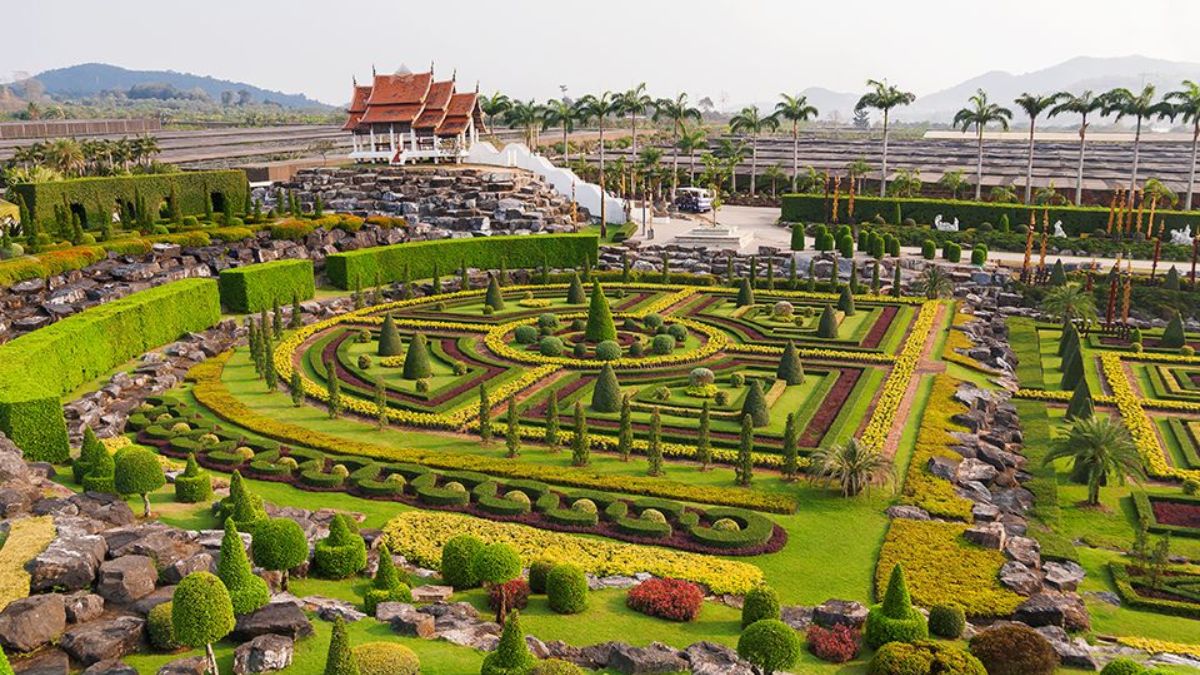Bangkok is famous for its bustling markets, riverside temples, and lively street food, but tucked between glass towers and busy streets there are many pockets of calm where plants, birds, and local families relax. When people search for “bangkok garden” they are usually looking for peaceful green spaces, botanical treasures, or garden-style restaurants and cafés that offer a quiet break from the city’s intensity. This article explains what makes a successful bangkok garden experience, how to find the right green space for your mood and schedule, what to expect in each season, practical tips for visiting, and recommendations for dining and family-friendly activities nearby. The tone is practical, friendly, and written in clear language so anyone can plan a relaxed and enjoyable escape into greenery.
What we mean by “Bangkok Garden”
A bangkok garden can be many things. It might be a formal botanical garden with labeled plant collections and guided tours, a small community park where locals practice tai chi at dawn, a rooftop garden atop an office building where workers sip coffee, or a garden-themed café with pots of herbs and low tables shaded by ficus trees. The common thread is a connection to plants and nature inside an urban landscape. Bangkok’s gardens range from grand, landscaped parks with ponds and walking trails to intimate courtyards hidden behind restaurant facades. Understanding the type of garden you want helps you pick the right spot and makes your visit more rewarding.
Why green spaces matter in Bangkok
Green spaces in any city offer more than just aesthetic beauty. For residents and visitors alike, a bangkok garden provides cleaner air, cooler microclimates, and places for exercise and socializing. Studies show spending time around plants lowers stress and improves mood, and Bangkok’s gardens serve that purpose for busy office workers, families with children, and visitors who need a slower pace for a few hours. Gardens also preserve biodiversity by maintaining native and exotic plant species, offering habitat for birds and insects, and serving as informal conservation sites. For photographers and nature lovers, the variety of foliage, water features, and insect life in a bangkok garden is a quiet treasure.
Top types of bangkok garden experiences
A bangkok garden visit can be tailored to what you want from the day. If you want a gentle walk and plant education, a botanical garden with labeled species is ideal. If you want a picnic and a playground for children, a public park with open lawns is better. For a romantic afternoon or an Instagram-friendly backdrop, cafe gardens with creative plantings and decorative pots are charming. For peaceful meditation, temple gardens offer shaded courtyards and the quiet rhythm of Buddhist practice. Below is a short numbered list of common garden experiences to help you decide.
-
Botanical and educational gardens where plants are labeled and staff may offer tours or plant talks.
-
Public parks with open lawns, walking paths, and exercise equipment used by locals each morning and evening.
-
Rooftop and hotel gardens that combine greenery with views of the skyline and often include dining.
-
Garden cafés and restaurants where potted plants, vertical gardens, and small ponds create an intimate setting.
-
Temple and monastery gardens offering quiet courtyards and reflective spaces for meditation and photography.
Best bangkok garden spots to consider
Bangkok offers a surprising number of excellent green spaces. Some are large, well-known parks that can fill a half day, while others are small, tucked-away gems perfect for a short break. It helps to think about distance, accessibility, and what else you want to do nearby. The table below compares a few representative garden spaces, giving you a quick snapshot to choose from.
| Garden / Park | Best time to visit | Highlights |
|---|---|---|
| Large urban park with lake | Early morning or late afternoon | Wide walking paths, paddle boats, local exercise groups |
| Botanical garden | Weekdays, morning | Labeled plant collections, conservatory, educational displays |
| Rooftop garden & café | Late afternoon to evening | City views, cooler air, cocktails or tea service |
| Temple garden courtyard | Midday when temple open | Quiet, sculpted plants, cultural atmosphere |
| Community pocket garden | Weekends | Local craft markets, family play areas, small classes |
This table is a guide rather than a rigid rule; each spot can feel different depending on weather, events, or recent renovations.
When to visit a bangkok garden: seasons and timing
Bangkok’s climate shapes the way gardens look across the year. The coolest, most comfortable months are usually from November to February, making this the busiest time for any bangkok garden. Flowers and deciduous trees can look their best. From March through May the heat becomes intense and humidity rises; plan early morning or late afternoon visits to avoid the harsh midday sun. The monsoon months, roughly May to October, bring frequent but short heavy rains that make gardens lush and green; a sudden shower can enhance the atmosphere but also make paths muddy. A practical tip is to check local weather forecasts before you go and carry a light rain jacket in the wet season and sunscreen and a hat in the hot season.
Planning your visit: what to bring and what to expect
A comfortable day in a bangkok garden requires simple planning. Wear breathable clothing and comfortable shoes for walking. Bring a refillable water bottle to stay hydrated, especially in warmer months. If you plan to photograph plants closely, carry a small lens cloth and a phone or camera with a macro-friendly mode. Many public parks do not charge entrance fees, while botanical gardens or special conservatories may have modest fees to support maintenance. Check opening hours; some gardens close early and may restrict entry after dusk. Respect rules about not picking plants, and pay attention to signage about feeding wildlife, which is often discouraged to protect local species.
Food, cafés, and dining near green spaces
Part of the charm of a bangkok garden visit is finding a nearby café or restaurant that aligns with the peaceful mood. Many parkside cafés serve simple Thai food, iced tea, and snacks that fit a relaxed afternoon. Some rooftop gardens include fine dining or brunch options, and a few botanical gardens operate small cafés that use herbs or plants from their collections in the menu. For families, look for garden cafés that offer shaded seating and room for children to move. If you plan a picnic, bring waste bags and take your trash with you or use the park’s bins; leaving the garden clean helps everyone enjoy the space.
Accessibility and family-friendly features
Accessibility varies across sites, but many major parks and botanical gardens in Bangkok make efforts to provide paved paths, ramps, and clear signage for visitors with mobility needs. If you have a stroller or wheelchair, call ahead or check the garden’s website to confirm path conditions. Families will appreciate parks with playgrounds, shallow ponds, or splash areas for children, while also choosing quieter gardens when toddlers need nap breaks. If you travel with an elderly relative, select gardens with plenty of benches and shaded rest areas. Observing and following local etiquette—keeping voices at moderate levels and allowing space for regular users like morning exercise groups—creates a respectful environment for everyone.
Photography and nature observation
A bangkok garden is a great place for amateur photography and nature observation. Early morning light reveals dew on leaves and active birds, while golden hour in the late afternoon creates soft, warm tones on gardens and water features. If you wish to photograph people, ask for permission. Macro shots of flowers and insects are especially rewarding in botanical collections where diverse species grow close together. Birdwatchers can spot local and migratory species in trees and near ponds; bringing a small pair of binoculars improves the experience. Remember to respect any rules about not climbing on rocks or entering restricted planting beds to protect the plants and your safety.
Safety and wildlife considerations
Bangkok’s gardens are generally safe, but simple precautions make your visit more enjoyable. Watch the weather; sudden storms during the monsoon can cause short-term flooding in low areas. Some parks use natural ponds that may host small fish and occasional monitor lizards—observe wildlife from a distance and do not feed or provoke animals. Use insect repellent if you will sit near water or in the evening when mosquitoes are active. If you have allergies, check whether a garden hosts many flowering trees or grasses that might trigger symptoms. Finally, keep valuables secure and be mindful of pickpockets in crowded parks during festivals or events.
Combining a garden visit with other Bangkok activities
A visit to a bangkok garden fits well into broader itineraries. Pair a morning walk in a park with a riverside boat trip, or spend an afternoon at a botanical garden followed by dinner at a nearby cultural market. Garden visits can provide a restful counterpoint to temple tours or busy shopping districts. If you have limited time, choose a garden close to your other plans so you do not lose travel time. For example, a rooftop garden near a shopping mall may allow you to rest before evening shopping, while a large urban park might serve as a full morning outing with a café lunch.
Simple maintenance and community gardening
Many small bangkok garden projects are run by local communities that volunteer help, plant native species, and organize weekend clean-ups. Community gardening fosters neighborhood ties and offers casual learning opportunities. If you want to get involved, look for community noticeboards, social media groups, or garden center postings that advertise open days, seed swaps, or volunteer planting sessions. Participating helps you understand the plants and the people who care for them, and it adds a rewarding social dimension to your appreciation of urban green spaces.
Practical checklist for a day in a Bangkok garden
Planning a day in a bangkok garden becomes effortless with a short mental checklist. Choose the type of garden that matches your mood, check opening hours and weather, bring water and sun protection, prepare simple camera gear if you like photography, and plan a meal stop either inside or close to the garden. If visiting with children or elderly family members, confirm accessibility and shade availability. Finally, leave the garden as you found it: carry out trash, avoid picking plants, and follow posted rules to preserve the space for everyone.
Final thoughts: making the most of your bangkok garden visit
A bangkok garden visit can be as short as a thirty-minute sit beneath a tree or as long as a full day exploring labeled collections and café menus. The key is to match your expectations to the space you choose, pay attention to the season and weather, and approach each garden with curiosity and respect. Whether you are looking for a place to practice mindfulness, a child-friendly picnic spot, or a botanical display to inspire photography, the city’s green pockets offer variety and calm. Treat each garden as a living museum—one that changes with weather and human care—and you will find new reasons to return.
This guide has aimed to be practical and approachable, with clear advice for planning, timing, and enjoying a bangkok garden experience. Pack a water bottle, set your watch for golden hour, and go discover a quieter side of Bangkok among leaves, water, and shade.
FAQs about visiting a bangkok garden
What is the best time of day to visit a bangkok garden?
Early morning and late afternoon are the most comfortable times for walking and photography because temperatures are cooler and light is gentle, and local exercise groups often create a lively but peaceful atmosphere in the morning.
What should I bring when visiting a garden in Bangkok?
Bring a refillable water bottle, sun protection like a hat and sunscreen, comfortable shoes, and a light rain jacket during the monsoon season. If you plan to picnic, bring waste bags to carry out your trash.
Are bangkok gardens family friendly?
Many are, yes. Parks with playgrounds, open lawns for play, and cafés with shade are suitable for families. Botanical gardens can be great for older children who enjoy learning about plants.
Do I need to pay to enter a botanical garden?
Some botanical gardens and conservatories charge a small entrance fee to support their maintenance. Public parks often have free entry, though special events might have a charge.
Can I take photographs in the gardens?
Photography is allowed in most gardens, but you should ask permission before photographing people and follow any posted rules about protected plant collections. Use caution around water features and private garden areas.
How do I find quiet garden spots away from crowds?
Seek out community pocket gardens, temple courtyards, or visit during weekdays and non-peak hours. Rooftop gardens and hotel gardens often have fewer crowds than major public parks.












